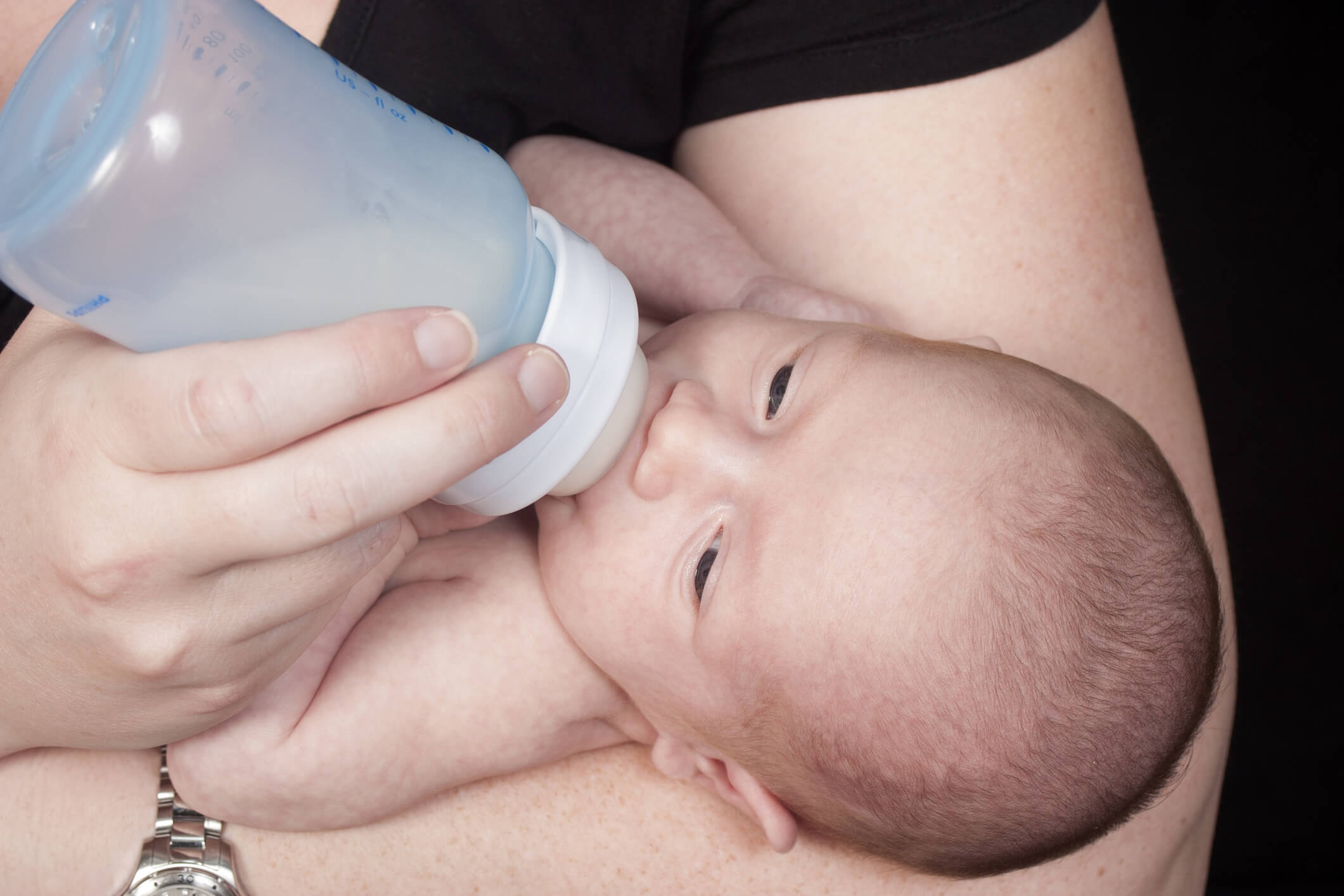How to Clean Bottles When Baby Has Thrush

As an affiliate, we may earn a commission from qualifying purchases. We get commissions for purchases made through links on this website from Amazon and other third parties.
When your baby has thrush, it’s important to take extra care to prevent the spread of the infection. One area of concern is your baby’s feeding accessories, including bottles, nipples, and pacifiers. These items can harbor the thrush fungus and reinfect your baby, so it’s important to clean them thoroughly and regularly. In this article, we’ll cover the best practices for cleaning bottles when your baby has thrush.
Thrush is a common fungal infection that can affect infants and young children. It’s caused by an overgrowth of the Candida fungus, which can spread through contact with infected surfaces. Symptoms of thrush in infants include white patches on the tongue and inside the mouth, as well as fussiness and irritability during feeding. If you suspect that your baby has thrush, it’s important to consult your healthcare provider for a diagnosis and treatment plan.
To prevent the spread of thrush through feeding accessories, it’s important to clean bottles, nipples, and pacifiers thoroughly after each use. This can help to remove any traces of the fungus and prevent reinfection. In the next section, we’ll cover the best practices for cleaning and caring for your baby’s feeding accessories when they have thrush.
Key Takeaways
- Cleaning and sterilizing bottles, nipples, and pacifiers is essential when your baby has thrush.
- Boiling water and a dishwasher can be effective methods for cleaning feeding accessories, but be sure to follow the manufacturer’s instructions.
- It’s important to continue cleaning and sterilizing feeding accessories even after your baby’s thrush has cleared up to prevent reinfection.
Understanding Thrush in Infants
As a parent, it’s important to be aware of thrush in infants. Thrush is a common fungal infection caused by Candida Albicans, a type of yeast that lives in the mouth and digestive system. When the immune system is weak, Candida Albicans can overgrow, leading to thrush.
Causes of Thrush
There are several factors that can contribute to thrush in infants. One of the most common causes is a weakened immune system. Infants have an immature immune system that is still developing, which makes them more susceptible to infections like thrush.
Other factors that can contribute to thrush include the use of antibiotics, which can kill off beneficial bacteria in the gut and allow Candida Albicans to grow unchecked. Additionally, if the mother has a yeast infection, she can pass it on to her baby during breastfeeding.
Signs and Symptoms
The most common sign of thrush in infants is the presence of white patches on the cheeks, tongue, and roof of the mouth. These patches may look like milk residue, but they cannot be wiped away easily. Infants with thrush may also be fussy and uncomfortable during feedings.
Impact on Feeding and Comfort
Thrush can make feedings uncomfortable for infants, especially if the infection is severe. The white patches can cause pain and discomfort, making it difficult for the baby to latch on and feed properly. This can lead to poor weight gain and other health issues.
To prevent thrush in infants, it’s important to practice good hygiene. Make sure to clean bottles and nipples thoroughly after each use and avoid sharing utensils or pacifiers. If you suspect that your baby has thrush, it’s important to speak with your pediatrician to get a proper diagnosis and treatment plan.
Preventing Thrush in Baby Bottles
If your baby has thrush, it is important to take extra care in cleaning and sterilizing their bottles, nipples, and pacifiers to prevent the spread of the infection. Here are some tips to help you prevent thrush in baby bottles:
Proper Bottle Selection
Choosing the right bottle can help prevent the growth of thrush. Look for bottles that are easy to clean and sterilize, such as those made of glass or BPA-free plastic. Avoid bottles with too many parts or hard-to-reach areas that can trap milk and saliva, as these are breeding grounds for bacteria and fungi.
Cleaning and Sterilization Techniques
Cleaning and sterilizing your baby’s bottles, nipples, and pacifiers is critical to preventing the spread of thrush. Here are some techniques to help you keep them clean:
- Use a bottle brush to scrub all parts of the bottle, nipple, and pacifier with hot, soapy water.
- Rinse all parts thoroughly with clean water.
- Sterilize the bottles, nipples, and pacifiers by boiling them in water for at least 5 minutes. Alternatively, you can use a steam sterilizer or sanitize them in the dishwasher.
- Air dry the bottles, nipples, and pacifiers on a clean towel or rack. Do not dry them with a cloth or paper towel, as these can introduce new bacteria.
Handling and Storage Practices
Proper handling and storage practices can also help prevent the spread of thrush. Here are some tips to keep in mind:
- Wash your hands thoroughly before handling your baby’s bottles, nipples, and pacifiers.
- Store the bottles, nipples, and pacifiers in a clean, dry place, such as a cabinet or drawer.
- Avoid storing the bottles, nipples, and pacifiers in the refrigerator, as this can introduce moisture and promote the growth of bacteria and fungi.
By following these tips, you can help prevent the spread of thrush in your baby’s bottles and keep them clean and safe for your little one to use.
Treatment Options for Thrush
If your baby has thrush, there are different treatment options available to help clear up the infection. In this section, we will discuss medical treatments prescribed by a pediatrician as well as home remedies and natural solutions to help alleviate symptoms.
Medical Treatments
If you suspect your baby has thrush, it is important to consult a doctor or pediatrician. They may prescribe an antifungal medicine, such as nystatin or fluconazole, to help clear up the infection. Nystatin is an antifungal cream that is usually prescribed as a first-line treatment for thrush. It is available as a prescription medication and is applied directly to the affected area. Fluconazole is another antifungal medicine that may be prescribed for thrush. It is available as a prescription medication and is usually taken orally.
Home Remedies and Natural Solutions
In addition to medical treatments, there are also home remedies and natural solutions that can help alleviate symptoms of thrush. Coconut oil is a natural remedy that has antifungal properties and can be applied directly to the affected area. Gentian violet is another natural remedy that can be used to treat thrush. It is a purple dye that is applied to the affected area with a cotton swab. However, it is important to note that gentian violet can stain clothing and skin.
Probiotics may also help to prevent thrush. Probiotics are live bacteria and yeasts that are good for your health, especially your digestive system. They can be found in certain foods, such as yogurt, or taken as a supplement. However, it is important to talk to your doctor before giving your baby any supplements.
In conclusion, there are different treatment options for thrush, including medical treatments prescribed by a doctor and home remedies and natural solutions. It is important to consult a pediatrician if you suspect your baby has thrush to determine the best course of treatment.
Caring for Feeding Accessories
When your baby has thrush, it’s important to take extra care when cleaning their feeding accessories to prevent the spread of infection. Here are some tips to help you keep your baby’s bottles, pacifiers, and breast pump clean and safe for use.
Cleaning Pacifiers and Nipples
Pacifiers and nipples should be cleaned after each use. You can wash them with warm, soapy water or run them through the dishwasher. To make sure they are thoroughly cleaned, you can use a bottle brush to scrub them inside and out.
To sanitize pacifiers and nipples, you can soak them in a solution of one teaspoon of baking soda and eight ounces of water for at least two minutes. You can also use a bleach solution of one tablespoon of bleach per gallon of water. Be sure to rinse them thoroughly with water after sanitizing.
Maintaining Breast Pump Hygiene
If you’re using a breast pump, it’s important to keep it clean to prevent the spread of thrush. After each use, you should disassemble the pump and wash all the parts that come into contact with breast milk in warm, soapy water. You can also run the parts through the dishwasher.
To sanitize breast pump parts, you can soak them in a solution of one teaspoon of bleach per quart of water for five minutes. Be sure to rinse them thoroughly with water after sanitizing.
Using Safe Cleaning Agents
When cleaning your baby’s feeding accessories, it’s important to use safe cleaning agents that won’t harm your baby. You can use dish soap and warm water to clean bottles, pacifiers, and breast pump parts. If you prefer, you can also use an antifungal solution that is safe for use with baby items.
After cleaning, be sure to let the items air dry on a clean drying rack. Avoid using towels or cloths to dry them, as this can introduce bacteria and other germs.
By following these tips, you can help prevent the spread of thrush and keep your baby’s feeding accessories clean and safe for use.
Dietary Considerations and Immune Support
When your baby has thrush, it’s important to take dietary considerations and immune support into account. By enhancing your infant’s diet, you can boost their immune system and help fight off the fungal infection.
Enhancing the Infant’s Diet
Breast milk is the best source of nutrition for infants, as it contains antibodies that can help fight off infections. If you’re bottle-feeding, make sure to use clean bottles and nipples. You can sterilize them by boiling them in water for five minutes or using a sterilizer.
In addition to breast milk or formula, you can introduce solid foods to your baby’s diet once they reach six months of age. Foods that are rich in vitamins and minerals, such as fruits and vegetables, can help support your baby’s immune system. It’s also important to avoid giving your baby foods that are high in sugar, as sugar can feed the candida fungus that causes thrush.
Supplements for Immune Health
Probiotics are beneficial bacteria that can help support your baby’s immune system. You can find probiotics in foods such as yogurt or kefir. If your baby is old enough to eat solid foods, you can also introduce probiotic supplements. However, it’s important to talk to your pediatrician before giving your baby any supplements.
In addition to probiotics, there are other supplements that can help support your baby’s immune system, such as vitamin D and zinc. Again, it’s important to talk to your pediatrician before giving your baby any supplements.
Foods to Avoid
When your baby has thrush, it’s important to avoid giving them foods that can exacerbate the infection. Sugary foods, including fruit juice, can feed the candida fungus and make the infection worse. It’s also important to avoid giving your baby foods that are high in carbohydrates, such as bread and pasta, as these can also feed the fungus.
By taking dietary considerations and immune support into account, you can help your baby fight off thrush and other health issues. Talk to your pediatrician about the best ways to support your baby’s immune system and keep them healthy.
When to Consult a Healthcare Professional
If your baby has thrush, it is important to monitor their response to treatment. While the symptoms of thrush can be uncomfortable, treatment is usually effective. However, if your baby’s symptoms persist or worsen, it is important to seek medical attention.
Monitoring Baby’s Response to Treatment
If your baby has been diagnosed with thrush, your pediatrician or doctor will likely prescribe an antifungal medication. It is important to follow the prescribed treatment regimen and to monitor your baby’s response to treatment. If your baby’s symptoms improve within a few days of starting treatment, this is a good sign that the medication is working. However, if your baby’s symptoms do not improve or if they worsen, you should contact your healthcare provider.
Identifying Secondary Infections
In some cases, thrush can lead to secondary infections. If your baby develops a fever, redness, or other signs of infection, it is important to seek medical attention. Your healthcare provider may prescribe antibiotics or other medications to treat the infection.
Understanding When Symptoms Worsen
If your baby’s symptoms worsen or if they develop new symptoms, it is important to seek medical attention. For example, if your baby develops a diaper rash or sore nipples, this may be a sign that the thrush has spread. Your healthcare provider can help you determine the best course of treatment.
In summary, if your baby has thrush, it is important to monitor their response to treatment and to seek medical attention if their symptoms persist or worsen. Your healthcare provider can help you identify secondary infections and can provide guidance on how to manage your baby’s symptoms.
Additional Care Tips
When your baby has thrush, it is important to take extra care when cleaning their bottles to prevent the spread of the infection. Here are some tips to help you keep your baby’s bottles clean and prevent further infections:
Managing Diaper Rash
Babies with thrush may also be more susceptible to diaper rash. To prevent diaper rash, change your baby’s diaper frequently and make sure to clean their bottom thoroughly with water and a mild soap. Avoid using wipes that contain alcohol or fragrances, as they can irritate the skin. Apply a diaper rash cream or ointment to your baby’s bottom after each diaper change to protect their skin.
Breast Care for Nursing Mothers
If you are breastfeeding your baby and have thrush, it is important to take extra care of your breasts to prevent the spread of the infection. Wash your hands before and after breastfeeding, and change your nursing pads frequently. If you are experiencing sore nipples or cracked skin, talk to your healthcare provider about using a lanolin cream or other nipple cream to soothe your skin. If you are experiencing shooting pains or other symptoms, contact your healthcare provider immediately, as these may be signs of a more serious condition such as breast cancer.
When cleaning your baby’s bottles, use hot, soapy water and a bottle brush to thoroughly clean all parts of the bottle, including the nipple and cap. Rinse the bottle and parts thoroughly with hot water to remove any soap residue. You may also want to consider sterilizing your baby’s bottles by boiling them in water for 5-10 minutes or using a sterilizer. Be sure to follow the manufacturer’s instructions for sterilizing your baby’s bottles.
If you have a dishwasher, you can also clean your baby’s bottles in the dishwasher. Place the bottles and parts in a dishwasher basket or mesh bag, and run the dishwasher on the hottest setting. Be sure to use a dishwasher detergent that is safe for baby bottles.
Finally, it is important to remember that thrush is caused by a yeast infection (candida albicans) and can be spread to other parts of the body, including the mouth and genitals. If you or your baby are experiencing symptoms of thrush, such as vaginal yeast infections, contact your healthcare provider for treatment options.
Frequently Asked Questions
What are the best practices for sterilizing bottles to prevent thrush?
To prevent thrush in infants, it is important to sterilize bottles, nipples, and pacifiers regularly. The American Academy of Pediatrics recommends boiling these items for at least five minutes. You can also use a steam sterilizer or dishwasher with a sanitize cycle. Be sure to wash your hands thoroughly before handling these items.
What steps should be taken to clean baby toys after a thrush infection?
Thrush can spread through contact with contaminated objects, so it is important to clean and sterilize baby toys that have come in contact with the baby’s mouth. Wash plastic toys with warm soapy water and rinse well. Soft toys and fabric items can be washed in hot water and dried on high heat. It is also a good idea to rotate toys and wash them regularly to prevent the spread of infection.
Are there specific treatments to use when cleaning a baby’s mouth with thrush?
To clean a baby’s mouth with thrush, use a clean, damp cloth to gently wipe the inside of their mouth and tongue. Avoid using a toothbrush or anything that may cause bleeding or irritation. You can also use a sterile gauze pad or a finger brush specifically designed for babies.
How can thrush in babies be prevented through proper bottle hygiene?
Proper bottle hygiene is key to preventing thrush in babies. Be sure to sterilize bottles, nipples, and pacifiers regularly, and wash your hands thoroughly before handling these items. Avoid sharing items between babies, and replace bottles and nipples every three to four months.
What are effective home remedies to treat oral thrush in infants?
While there is no one-size-fits-all solution, some home remedies may help alleviate symptoms of thrush in infants. For example, applying a small amount of coconut oil to the affected area may help relieve discomfort. Probiotics and yogurt may also help restore the balance of bacteria in the baby’s mouth.
Does the presence of thrush in infants necessitate a change in bottle-feeding routines?
While thrush can be uncomfortable for infants, it does not necessarily mean you need to change your bottle-feeding routine. However, it is important to maintain proper bottle hygiene and sterilize bottles regularly to prevent the spread of infection. If you have concerns about your baby’s feeding routine, consult your pediatrician.
About Us
Our goal is to empower you with concise probiotic guidance for a healthier gut. With expert advice, we provide the knowledge to improve your well-being and navigate the world of probiotics efficiently, ensuring you achieve optimal gut health.
- Can You Take Probiotics While Water Fasting?
- Does Fasting Help Microbiome Diversity and Functionality?
- Does Fasting Help Your Bowels
- Does Fasting Help Probiotics? Understanding Gut Health Benefits
- Does Fasting Help the Gut: Understanding the Impact on Digestive Health
Disclaimer
As an affiliate, we may earn a commission from qualifying purchases. We get commissions for purchases made through links on this website from Amazon and other third parties.
Check these out on Amazon








